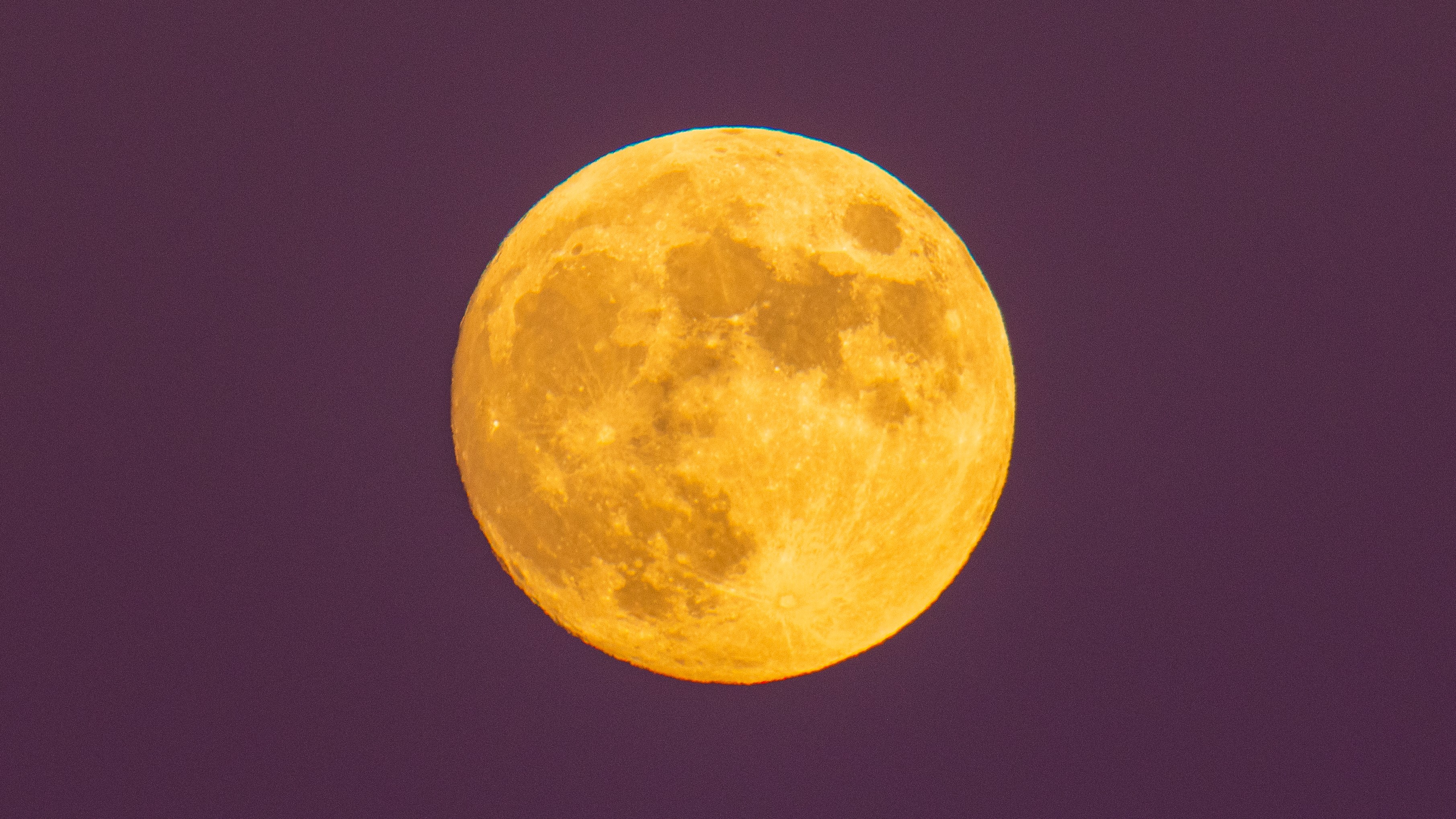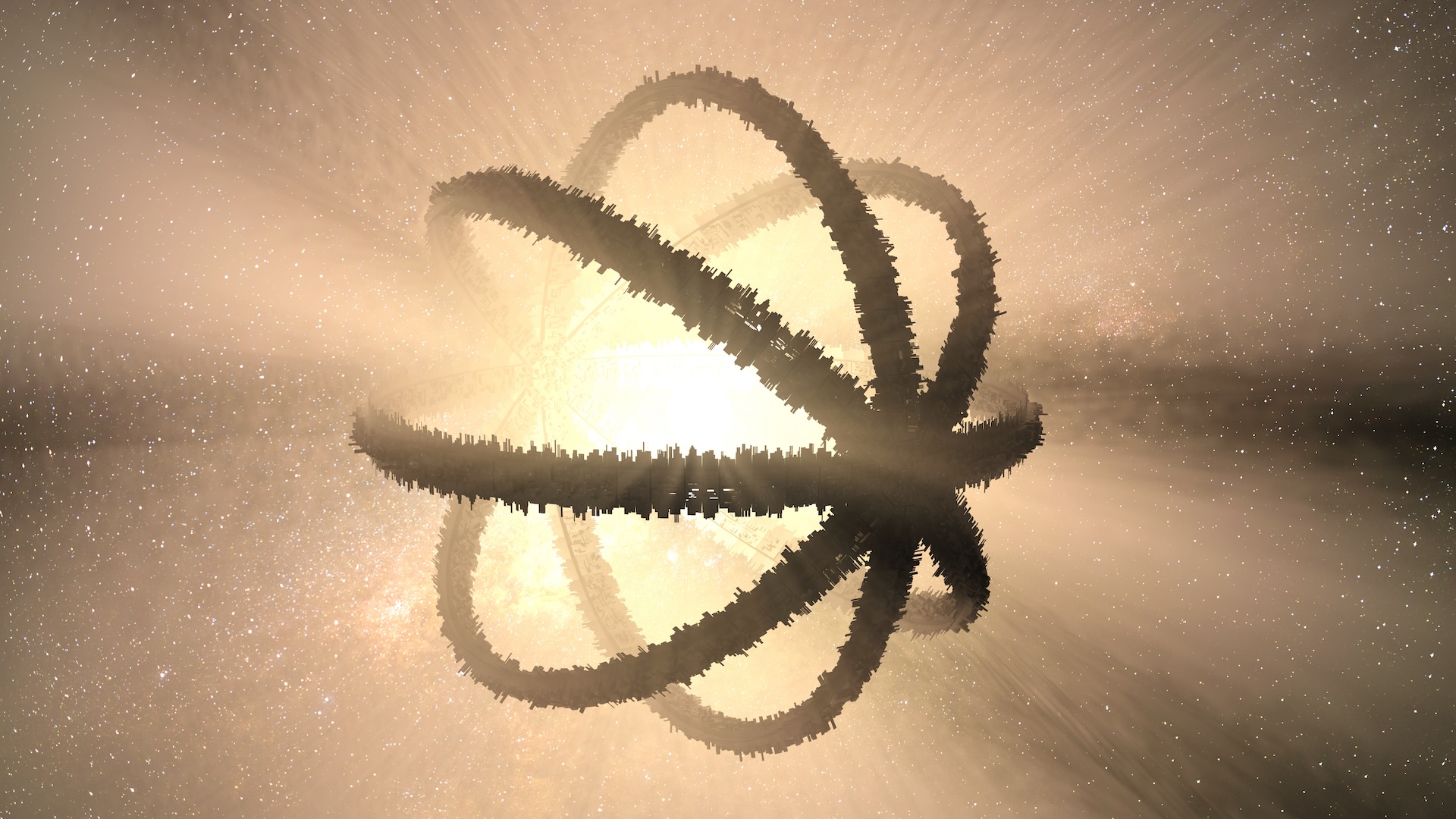How to see tonight's full Snow Moon rise with the 'Heart of the Lion' before Valentine's Day
Tonight's full Snow Moon will have a royal companion as it rises alongside Regulus, a star nicknamed "Heart of the Lion", in time for Valentine's Day.

The second full moon of 2025, February's Snow Moon will appear on the eastern horizon in a blaze of orange tonight (Feb. 12). But there's a bonus reason to watch the full moon rise a little higher into the sky tonight: its regal companion.
The moon will be officially full at 8:53 a.m. EST on Wednesday (Feb. 12) and will be best seen at dusk at the moment of moonrise where you are. It will be in the constellation Leo, hanging above the bright star Regulus. The moon will also appear bright and full on Feb. 13.
The brightest star in the constellation Leo, Regulus is around 79 light-years from Earth and one of the brightest stars in the night sky. It's nicknamed the "Heart of the Lion" for its position within Leo, although its name means "Little King," according to Sky & Telescope.
Regulus is also one of the four "Royal Stars" of ancient Persian astronomy. Like the other three — Aldebaran in Taurus, Antares in Scorpius, and Fomalhaut in Piscis Austrinus — it appears close to the ecliptic, the path of the sun through the sky and the plane of the solar system, according to Live Science's sister site Space.com. That means all four stars frequently appear close to the moon and the planets in the night sky and close to the sun in the daytime.
Related: Full moons of 2025: Names, dates and everything you need to know
The best way to see the full moon rise is to find an elevated location or an open space with a clear view of the eastern horizon. Although you can easily view a full moon with the naked eye, a pair of good stargazing binoculars or a simple backyard telescope will reveal lunar craters and mountains in detail.
The next full moon, the Worm Moon, will rise on March 14. The night before, the moon will pass into Earth's umbral shadow, causing a total lunar eclipse to be visible across North and South America. The only light that will reach the lunar surface will have first been filtered by Earth's atmosphere, which will cause the full moon to turn reddish-orange for 1 hour, 5 minutes, according to Timeanddate.com. Thanks to this ruddy hue, the eclipsed moon is sometimes nicknamed a "blood moon."
Sign up for the Live Science daily newsletter now
Get the world’s most fascinating discoveries delivered straight to your inbox.
March's total lunar eclipse is just one of the many stellar stargazing events headed our way in 2025. Check our annual skywatching guide to follow along with the events we're most excited for.
Editor's note: This article was updated on Feb. 12, to reflect that the full moon is rising tonight.

Jamie Carter is a freelance journalist and regular Live Science contributor based in Cardiff, U.K. He is the author of A Stargazing Program For Beginners and lectures on astronomy and the natural world. Jamie regularly writes for Space.com, TechRadar.com, Forbes Science, BBC Wildlife magazine and Scientific American, and many others. He edits WhenIsTheNextEclipse.com.
You must confirm your public display name before commenting
Please logout and then login again, you will then be prompted to enter your display name.









